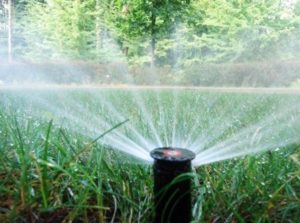global automated irrigation market is projected to exhibit a CAGR of 5.3%
The global automated irrigation market is projected to exhibit a CAGR of 5.3% during the forecast period of 2021 to 2028.
the key players in the global automated irrigation market: The Toro Company (US), Hunter Industries (US), Netafim (Israel), Stevens Water Monitoring Systems Inc. (US), Valmont Industries, Inc. (US), Lindsay Corporation (US), Jain Irrigation Systems Ltd (India), HydroPoint Data Systems, Inc. (US), Nelson Irrigation (US), and Galcon (Israel).
Market Highlights
The global automated irrigation market is projected to be valued at USD 365.02 million by 2028, recording a CAGR of 5.3% during the forecast period. Automation in agriculture is enabling farmers to deal with enormous challenges. Automation addresses agriculture issues and increases the quality, quantity, sustainability, and cost-effectiveness of agricultural production. The level of accuracy of temperature, moisture, pH of the soil affects crop productivity to a greater extent. Higher the level of accuracy would be the chances to make crops being damaged at a lower rate. These are some of the challenges which can be eliminated to a greater extent with automated irrigation thus, driving the market demand. Furthermore, automated irrigation can help in crop water management to manage the limited water supply smartly with the least wastage of water resources.
The advent of the global pandemic, COVID-19, has resulted in a global crisis. Impacting over 220 countries, the outbreak has already created an economic backdrop worldwide. As of May 2021, more than 167 million confirmed cases of COVID-19 globally, and more than 220 countries have been affected by the pandemic. The global pandemic is deemed to create a chaotic environment, resulting ina global recession. With the rapidly rising cases, the global automated irrigation market is getting affected in many ways.
Segmental Analysis
The global automated irrigation market has been segmented based on components, type, application, end use,and region.
Based on components, the global automated irrigation market has been divided into controllers, sensors, valves, sprinklers, and others. The controllers segment accounted for the largest market share in 2020. However, the sensors segment is projected to gain a higher CAGR during the review period as sensors help in determining irrigation needs and gaining real-time soil moisture levels. They help in improving connectivity along with accessing real-time data via an installed app or a web-based interface to irrigators on their smartphones. These benefits provided by sensors provide convenience and quality service to growers, thereby being the fastest-growing segment during the forecast period.
By type, the global automated irrigation market has been segmented as time-based, volume-based, real-time-based, and computer-based control systems. The time-based segment accounted for the largest market share in 2020. However, the real-time-based segment is projected to gain higher CAGR during the review period. The fast growth of real-time-based irrigation systems owing to the increasing demand for real-time data gathered using sensors and tensiometers for rain, temperature, and weather. Moreover, real-time-based automation systems are more sustainable in comparison with time-based systems, as they consume lesser water. Owing to these factors, the real-time segment is anticipated to experience the fastest growth over the forecast period.
By application, the global automated irrigation market has been segmented into water resource management, soil management, and groundwater management. The groundwater management segment accounted for the lower market share in 2020. However, the segment is projected to register the highest growth rate during the forecast period.
Based on end use, the global automated irrigation market has been segmented into agricultural and non-agricultural. The non-agricultural segment is expected to grow at a higher growth rate during the forecast period. However, the agricultural segment accounted for the largest market share in 2020 as agriculture is one of the key occupations in many regions. This factor is expected to boost the growth of the agriculture segment. Moreover, standardized and low production cost makes it affordable for consumers in emerging countries of regions such as Asia-Pacific and Latin America
Regional Analysis
Geographically, the global automated irrigation market has been categorized as North America,Europe, Asia-Pacific,South America, and Middle East & Africa. As per CRI analysis, North America constituted a dominant share of the automated irrigation market in 2020.

